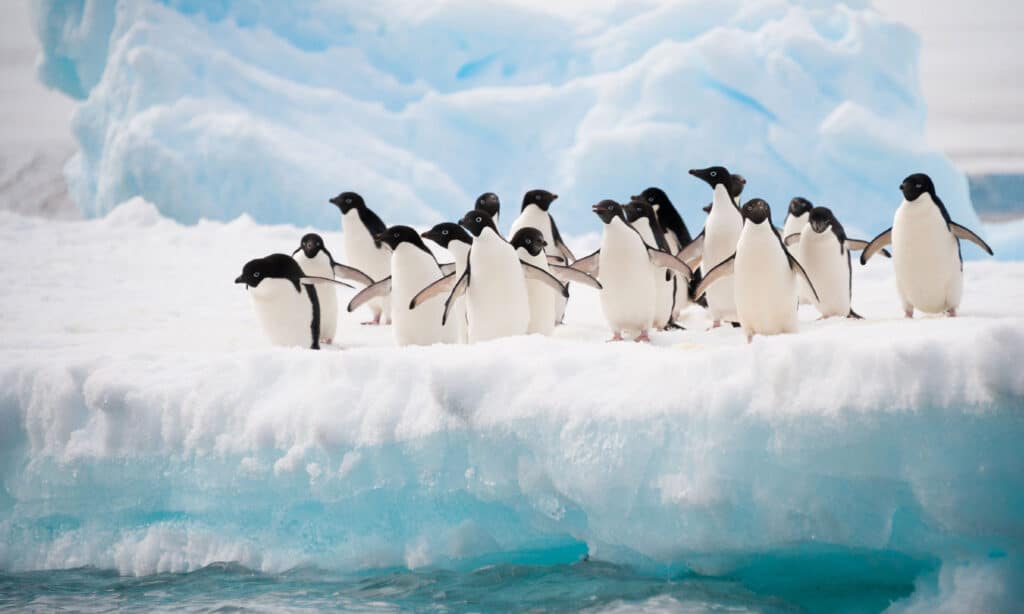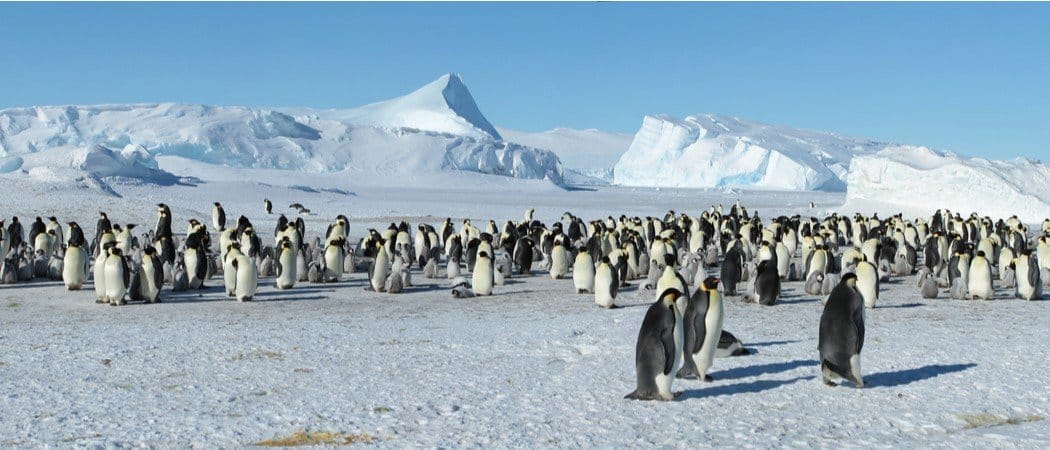The windiest place on planet Earth isn’t somewhere that you’ll likely end up unless you’re moonlighting as a daring Antarctic adventurer or climate scientist. This is because the windiest place in the world is Commonwealth Bay in Antarctica, which holds several world records in relation to the frequency and strength of its constant winds.
Commonwealth Bay is approximately 30 miles wide at its entrance and was discovered in 1912 by an Australian explorer named Douglas Mawson. This explorer chartered a famously disastrous expedition in this region of Antarctica, which we’ll explore later.
Commonwealth Bay is a rather inhospitable place, but this hasn’t stopped some wildlife from making it home. The bay hosts a massive penguin population; other creatures like whales and leopard seals live in its waters.
Where Is Commonwealth Bay Exactly?
Commonwealth Bay lies in a region of Antarctica that is part of Australia’s territorial claim on the Southern continent. The entire continent of Antarctica is divided between several nations that have borders close to the southern hemisphere. This is done in order to avoid any one nation trying to control the southern continent.
Commonwealth Bay is along the George V Coast, a section of Antarctica along the eastern edge of the continent. This coast contains some notable glaciers for the region, including the Mertz Glacier and the Ninnis Glacier. These two glaciers form a region known as the Mertz-Ninnis Valley.
The East Antarctic is even colder and more inhospitable than the West Antarctic. The East Antarctic is covered with permanent snow and ice.

A typical bay in Antarctica.
©Ivan Hoermann/Shutterstock.com
Katabatic Winds
Commonwealth Bay’s constant windiness and the ferocity of said winds owe much to a phenomenon known as Katabatic Winds.
Katabatic Winds are winds comprised of high-density air getting sucked down a slope by gravity. As such, they mostly occur on the sides of canyons and mountain slopes. Katabatic Winds are often mild but can also move with the force of Hurricanes.
Commonwealth Bay has many sharp ice sheets and mountains that juxtapose fiercely with the low-lying glacial plains that lie at sea level. High-density cold air over the flat ice sheets of the continent regularly builds up enormous amounts of gravitational force. The resulting winds in this part of Antarctica regularly reach speeds of over 180 mph.
These Katabatic winds are so fierce in Antarctica that they sometimes blow the thick layers of ice and snow away from the earth that they cover, resulting in patches of bare land that scientists call “Antarctic Oases.” The entire surface of Antarctica is affected heavily by these winds.
In Commonwealth Bay, the winds are prevalent and strong enough to create several interesting companion weather phenomena. One can bear witness to swirling whirlpools and rapidly changing cloud formations in Commonwealth Bay. These phenomena shift and change at rapid speeds in this extreme weather place.
What Wildlife Lives in Commonwealth Bay?
Despite the weather in Commonwealth Bay being so extreme and intense, several wildlife species manage to eke out a living in this part of the world.
The bay used to be home to an enormous colony of Adelie Penguins, who became stranded there in 2011 due to shifts in the volatile ice fields of this part of Antarctica. At its peak, the colony numbered about 160,000 individuals. Unfortunately, most of these penguins perished under the harsh conditions of Commonwealth Bay in the ensuing years. Other animals that can glimpsed in Commonwealth Bay include Antarctic Petrels, Emperor Penguins and Leopard Seals.

A large amount of Adelei Penguins once lived in the bay.
©iStock.com/axily
Douglas Mawson’s Expedition
Commonwealth Bay was first discovered by an Australian explorer by the name of Douglas Mawson. Unfortunately for Mawson, his expedition was famously arduous, even by the extreme standards of early Antarctic exploration.
Mawson ventured into the heart of the icy continent in order to chart previously unseen quarters of the continent. His expedition lasted three years, and during that time, he and his team performed many firsts on the frozen continent, including being the first to reach the South Pole.
Making out of the ice would prove more difficult than the expedition forward. Two of Mawson’s colleagues would die, one from falling into a crevasse and another from exposure and maltrunition.
Mawson himself would make the solo trek to the shores of the Antarctic only to miss the ship sent to fetch him. He then spent an extra year at Cape Denison waiting for additional aid. However, upon returning to Australia, Mawson was garlanded by many scientific and societal honors.
Thank you for reading! Have some feedback for us? Contact the AZ Animals editorial team.








